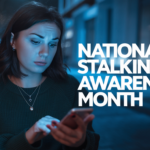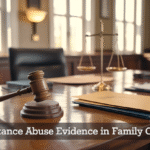
Emergency Custody Orders: When and How to Act Fast
Emergency Custody Orders: When and How to Act Fast
Imagine receiving a call that your child is in danger while in the care of their other parent. Your heart races, panic sets in, and you’re faced with a horrifying reality: you need to act immediately to protect your child. In situations where a child faces imminent harm—whether from physical abuse, severe neglect, or exposure to domestic violence—emergency custody orders become a critical legal lifeline. These court directives can temporarily alter custody arrangements within 24 hours, potentially making the difference between safety and continued danger for a vulnerable child.
But what exactly qualifies as an emergency worthy of court intervention? And how can you navigate this complex legal process when every minute counts? The courts don’t grant these orders lightly; they require substantial evidence of serious and immediate threats to a child’s wellbeing—not simply disagreements about parenting styles or minor lapses in judgment. Successfully securing emergency custody demands understanding the legal thresholds, gathering compelling evidence, and often working alongside experienced family law professionals who can guide you through this high-stakes process.
In this comprehensive guide, we’ll walk you through everything you need to know about emergency custody orders: understanding what they are and when they’re appropriate, navigating the legal filing process, building a compelling case with proper evidence, working effectively with family law professionals, and managing the aftermath once an emergency order is granted. Whether you’re seeking protection for your child or responding to allegations, this information could prove invaluable in safeguarding what matters most—your child’s wellbeing.
Understanding Emergency Custody Orders
Definition and Purpose of Emergency Custody Orders
Emergency custody orders are specialized legal directives issued by courts when a child faces an immediate risk to their safety or welfare. These orders serve a critical purpose: to provide swift protection for children in situations where waiting for standard custody proceedings could potentially expose them to harm. The court’s primary concern in issuing these orders is always the child’s best interests, allowing for rapid intervention when necessary to safeguard vulnerable minors.
Situations that Qualify as Emergencies
Not all custody disputes warrant emergency intervention. Courts specifically recognize specific scenarios as qualifying emergencies:
- Physical abuse: Evidence of harm or imminent threat of harm to the child
- Neglect: Severe instances where basic needs aren’t being met
- Domestic violence: Situations where a child witnesses or is exposed to violence between household members
- Substance abuse: Cases where a parent’s drug or alcohol use creates an unsafe environment
- Abandonment: When a parent has left a child without proper care or supervision
- Parental incarceration: Circumstances where a custodial parent is jailed and adequate arrangements haven’t been made
In each of these scenarios, the court determines whether the situation poses an immediate danger that requires expedited action, rather than adhering to standard custody timelines.
Distinction Between Emergency Orders and Permanent Custody Changes
It’s crucial to understand that emergency custody orders differ significantly from permanent custody modifications:
- Temporary nature: Emergency orders are short-term solutions designed to address immediate safety concerns
- Limited scope: They focus exclusively on the child’s immediate protection rather than long-term arrangements
- Subject to review: These orders typically remain in effect only until follow-up hearings can assess the situation more thoroughly
- Lower evidence threshold: While still requiring substantiation, emergency orders may be granted based on a preliminary showing of risk
- Expedited process: Emergency petitions move through the system faster, often with ex parte hearings where only one party is initially present
Following the issuance of an emergency order, the court will schedule subsequent proceedings to determine whether permanent custody changes are warranted based on more comprehensive evidence and testimony.
Now that we understand what emergency custody orders are and when they apply, let’s examine the specific legal process for obtaining these critical protections in our next section, “The Legal Process for Emergency Custody.”
The Legal Process for Emergency Custody
Now that we understand what emergency custody orders are and when they might be necessary, let’s examine the legal process involved in obtaining one. This process moves quickly by design, as it’s intended to provide immediate protection for children in dangerous situations.
Initial Reporting and Court Hearings
When a child’s safety is at immediate risk, the legal system provides an expedited pathway. After filing a formal motion that clearly articulates the immediate risks to the child’s safety, the court typically schedules hearings within 24 hours. This rapid response acknowledges the urgent nature of these situations.
The process begins with filing the appropriate forms at your local courthouse. You’ll need to:
- Find the correct court in your jurisdiction that handles family law matters
- Obtain and complete the necessary emergency custody petition forms
- Submit your filing along with any supporting documentation
- Pay any required filing fees (though fee waivers may be available in hardship cases)
After filing, the court will schedule an expedited hearing to address the immediate concerns regarding the child’s welfare. It’s crucial to prepare thoroughly for this hearing, as you’ll need to present evidence of the immediate danger to the judge clearly.
Ex Parte Orders: Taking Action Without Notifying the Other Parent
In particularly urgent situations, courts may issue what’s known as an “ex parte” order. This allows a judge to make a temporary custody decision without the other parent being present or even notified beforehand. These orders are extraordinary measures taken only when:
- There is credible evidence of immediate danger to the child
- Waiting for a standard hearing could put the child at further risk
- The situation demands immediate intervention
Ex parte hearings are conducted with only one party present—the person seeking emergency custody. The judge will review the evidence presented and make an immediate determination about temporary custody arrangements. However, these orders are strictly temporary, and a full hearing with both parties present will be scheduled shortly afterward, typically within a few days or weeks.
Evidence Requirements and Documentation Needed
For emergency custody proceedings, courts require compelling evidence that demonstrates immediate risk to the child. The quality and quantity of your documentation can significantly impact the outcome of your petition.
Essential documentation may include:
- Medical records showing injuries or neglect
- Law enforcement reports related to domestic violence or unsafe conditions
- Visual documentation (photographs or videos) of hazardous living conditions
- Witness statements from individuals who have observed the dangerous situation
- Expert assessments from child psychologists or social workers
- Documented conversations, emails, or text messages that support your concerns
When gathering evidence, focus on documentation that establishes the immediate nature of the threat. Courts are looking for concrete proof that waiting for a standard custody hearing would put the child at risk.
With this comprehensive understanding of the legal process for emergency custody, we can now focus on the specifics of proving your emergency custody case, which will be crucial for convincing the court that intervention is necessary.
Proving Your Emergency Custody Case
Now that we’ve explored the legal process for filing emergency custody orders, let’s focus on what makes a compelling case in the eyes of the court. Successfully obtaining an emergency custody order hinges on your ability to provide strong, convincing evidence that demonstrates immediate danger to your child.
Types of Evidence That Courts Consider Compelling
Courts prioritize documented evidence when evaluating emergency custody claims. The most persuasive forms of evidence include:
- Police reports: Official documentation of domestic violence incidents, substance abuse situations, or other dangerous circumstances involving the other parent
- Medical documentation: Records showing injuries, treatment for abuse, or health issues resulting from neglect
- Visual documentation: Photographs of unsafe living conditions or physical injuries
- Expert testimony: Assessments from child psychologists or social workers evaluating the child’s welfare
- Witness statements: Affidavits from credible witnesses who have observed concerning behavior or dangerous situations
- Social worker assessments: Professional evaluations documenting risks to the child’s safety
The quality and quantity of documentation have a significant impact on the court’s decision. Having multiple forms of objective evidence strengthens your case considerably and demonstrates the legitimate nature of your concerns.
What Doesn’t Qualify as an Emergency
Not all parenting disagreements warrant emergency intervention. Courts distinguish between genuine emergencies and situations that can be addressed through standard custody proceedings:
- Minor parenting mistakes or differences in parenting styles
- Disagreements over routine decisions like bedtimes or diet
- Non-dangerous lapses in judgment
- Isolated incidents without a pattern of behavior
- Allegations without supporting evidence
Remember that emergency custody orders are reserved for situations involving substantial risk to a child’s immediate safety and welfare, such as abuse, neglect, abandonment, substance abuse issues, or domestic violence.
Building a Strong Case Quickly
When faced with an emergency, you need to gather compelling evidence efficiently:
- Document everything: Keep detailed records of incidents, including dates, times, and specific details
- Collect supporting evidence: Gather police reports, medical records, and other documentation as quickly as possible
- Secure witness statements: Obtain written statements from witnesses who can corroborate your claims
- Organize your evidence: Create a clear, chronological presentation of the facts that demonstrates the immediate danger
- Prepare a concise statement: Clearly articulate the specific risks to your child’s safety in your petition
The court evaluates not only the existence of evidence but also how it collectively demonstrates an immediate threat to the child’s well-being. Building a coherent narrative supported by documentation is crucial for convincing a judge to grant an emergency order.
With a solid understanding of what evidence you’ll need to present, working with experienced family law professionals becomes the next critical step in navigating this challenging process. A knowledgeable attorney can help ensure your evidence is presented correctly and meets the legal threshold for emergency intervention.
Working with Family Law Professionals
Now that we’ve explored how to prove your emergency custody case, it’s critical to understand the value of professional legal guidance during this challenging process. Working with experienced family law professionals can significantly impact the outcome of your emergency custody petition.
The role of family law attorneys in emergencies
Family law attorneys play a crucial role when immediate action is needed to protect a child. When informal negotiations with the other parent fail or direct communication isn’t possible, a family law attorney can provide essential mediation assistance. These professionals understand the urgency of emergency custody situations and can help you navigate the complex legal requirements of Family Code 3064.
An attorney’s experience is particularly valuable when determining whether your situation truly constitutes an emergency that warrants court intervention. They can objectively assess your circumstances and advise on whether filing an emergency custody petition is appropriate or if other solutions might be more effective.
How attorneys help with evidence collection and court filings
One of the most valuable services a family law attorney provides is assistance with collecting and preparing evidence. As discussed in the previous section, strong evidence is crucial for emergency custody petitions. An attorney can help you:
- Identify and organize relevant evidence like emails, photographs, and police reports
- Ensure your petition meets all legal standards and requirements
- Review documentation for completeness and persuasiveness
- File the petition correctly and handle the mandatory notification to the other parent
Suppose you’re the responding parent defending against an emergency custody petition. In that case, an attorney can evaluate the petition for legal deficiencies that might allow for dismissal, gather counter-evidence, and help you prepare witnesses for your defense.
Balancing parental rights with child safety concerns
Family law professionals understand the delicate balance between protecting parental rights and ensuring the safety of children. An experienced attorney can help you navigate this complex terrain by:
- Focusing your case on the child’s best interests
- Presenting evidence of danger without appearing vindictive
- Highlighting safety concerns while acknowledging the importance of parent-child relationships
- Developing strategies that protect the child while respecting legal processes
With the guidance of a knowledgeable family law attorney, you can avoid detrimental mistakes that might otherwise harm your case during these high-stakes proceedings.
With a strong legal team supporting your emergency custody petition or defense, you’ll be better positioned to navigate what comes next. After the emergency order is granted or denied, there are essential steps to take to ensure ongoing protection and compliance, which we’ll explore in the next section.
After the Emergency Order
Now that we’ve explored working with family law professionals to secure your emergency custody order, it’s essential to understand what happens after this critical first step. The journey doesn’t end once the emergency order is granted—in fact, it often marks the beginning of a more comprehensive legal process.
Temporary Nature of Emergency Custody Arrangements
Emergency custody orders are intended as temporary solutions to address urgent situations. These orders typically last from a few days to several weeks, providing immediate protection for the child while allowing the court time to investigate the circumstances more thoroughly. During this period:
- The custodial parent receives temporary authority to make decisions for the child
- The arrangement does not establish permanent custody rights
- The order addresses only the child’s immediate safety needs
- Courts will schedule follow-up hearings to reassess the situation
Remember that emergency custody is a short-term intervention specifically designed to mitigate immediate danger to the child, not to determine long-term custody arrangements.
The Other Parent’s Right to Respond
After an emergency custody order is granted, the non-custodial parent is notified and allowed to respond to the allegations. This is a fundamental aspect of due process in the legal system. The responding parent has the right to:
- Challenge the emergency order by presenting evidence that disputes the initial claims
- Demonstrate that conditions necessitating the order have changed
- Request modifications to visitation arrangements
- Present their case during formal court hearings
The court may impose supervised visitation or other restricted contact depending on the assessed risk to the child while this process unfolds.
Next Steps in the Legal Process
Following the emergency order, several critical legal proceedings will take place:
- Formal Court Hearing: Both parents will present evidence regarding their ability to care for the child. This hearing determines whether the emergency conditions still exist.
- Possible Outcomes:
- Extension of the emergency order if danger persists
- Modification of custody terms based on new information
- Dismissal of the order if no ongoing danger is proven
- Long-term Considerations: The court will evaluate factors such as:
- The child’s stability and emotional bonds
- Each parent’s ability to provide a safe environment
- Any involvement from Child Protective Services investigations
- Permanent Custody Decision: After reviewing all evidence, the court will make determinations about permanent custody arrangements that serve the child’s best interests.
Throughout this process, maintaining detailed documentation and continuing to work with your family law attorney is essential for navigating these complex proceedings effectively. The temporary emergency measures will eventually transition into more permanent arrangements through the court’s careful consideration of all relevant factors.
Emergency custody orders serve as a critical safeguard for children facing immediate danger. Throughout this guide, we’ve explored the fundamentals of these orders, the legal processes involved, how to build a compelling case, the importance of working with family law professionals, and what happens after an emergency order is granted. Remember that these orders are reserved for hazardous situations—physical or sexual abuse, severe neglect, or exposure to domestic violence—not for addressing minor parenting disagreements or custody disputes.
When a child’s safety is at risk, acting swiftly and appropriately is essential. If you find yourself in a situation where you believe a child needs immediate protection, don’t hesitate to contact a qualified family law attorney who can guide you through this complex and time-sensitive process. An experienced attorney will help you gather the necessary evidence, file the appropriate documents, and advocate for the child’s best interests. While emergency custody situations are undoubtedly stressful, understanding your options and having proper legal support can make a significant difference in protecting a child when it matters most.










